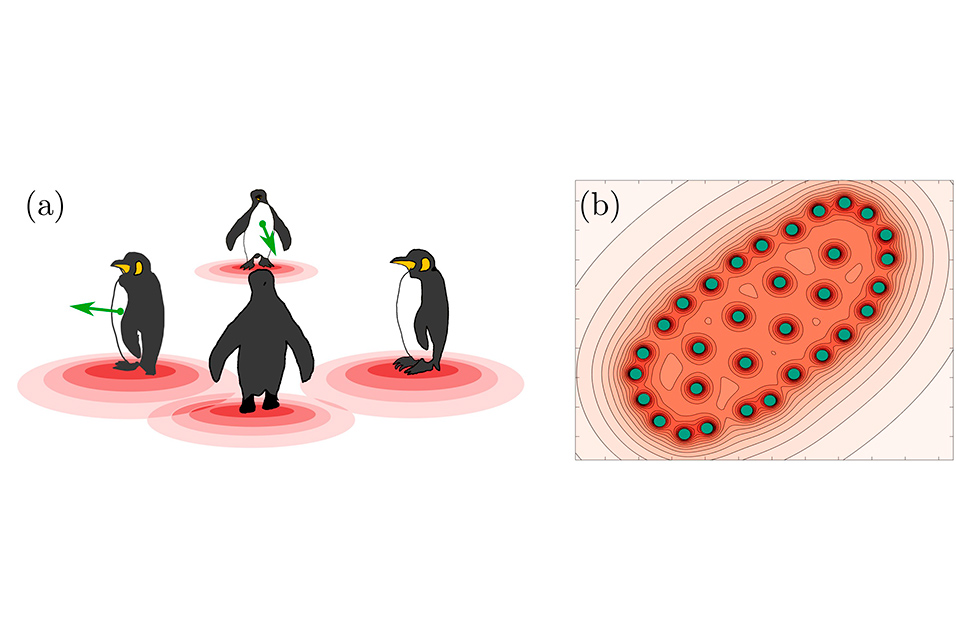DÜSSELDORF.- A research team from
Heinrich Heine University Düsseldorf has worked together with TU Darmstadt and an MPI based in Garching to examine the group dynamics of communicating active particles. These particles are consistently focused on self-optimisation. By always endeavoring to maintain their own personal comfort, they also help the other group members. As the researchers describe in the journal Proceedings of the National Academy of Sciences, such self-optimisation is a common multi-body phenomenon which can occur for penguins and bacteria.
Penguins in the Antarctic battle against the cold and group together in order to keep each other warm. But if they stand too close together, they overheat. Consequently, there is an ideal temperature that the penguins reach when they keep a small distance from each other, but not too small. Each individual penguin acts in its own self-interest, moving in precisely the direction of the largest temperature increase or drop.
This is an example of a multi-body system of communicating active particles or of 'interactive agents." Researchers from HHU, the Technical University of Darmstadt and the Max Planck Institute for Extraterrestrial Physics in Garching wanted to better understand how to describe these multi-body systems, because many other systems might use similar self-optimization principles.
The team working with first author Dr. Alexandra Zampetaki from the Institute of Theoretical Physics II at HHU has now found that it is this individual self-interest that creates an ideal zone for the entire group, where all of the penguins have the perfect temperature.
The physicists used a fundamentally new model for active particles that can self-direct their direction of motion. The particles communicate with each other by perceiving a jointly available resource that can be abstractly described by what is referred to as a 'scalar field'—for example a temperature field. The effect of the field is that the particles move in the direction that is most favorable for them to reach their ideal situation.
The researchers also found that the interaction with the field automatically leads to what are known as 'three-body forces' or 'triplet forces' between the particles. While all fundamental forces in nature—such as gravitation and electromagnetic Coulomb force—are a pair of forces between pairs of particles, triplet forces only occur when three particles are present simultaneously. These triplet forces are the key to understanding the collective dynamics of the communicating active particles.
"Almost all fundamental laws of physics can be described as a minimisation problem, for example such that the overall energy becomes minimal," explained Prof. Dr. Hartmut Löwen, Head of the Institute at HHU. "By contrast, there was no minimisation in the system we examined. Instead, there was optimisation to reach an ideal zone." This allows for an internal group dynamic that is ultimately beneficial for all, despite being driven by self-interest. The behavior results in an ordered, aperiodic configuration in which agents with fewer neighbors stand closer together to keep each other warm—just like the penguins.
Prof. Dr. Benno Liebchen from TU Darmstadt added: "The interaction between the penguins via a collectively created field is reminiscent of how many micro-organisms communicate. For example, bacteria that consume oxygen could in principle use a similar optimisation principle to achieve the optimum oxygen concentration without having to coordinate their behavior."
Dr. Zampetaki concluded: "The optimisation principle we discovered builds a bridge between physics and biology and shows how quantitative modeling of simple communication rules leads to phenomena that would be unachievable based on ordinary pairing interaction."









